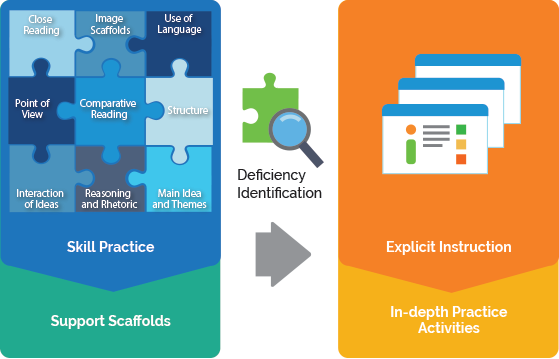How it Works | ADAPTIVE INSTRUCTION
Ensure Effective Differentiation
Reading Plus' adaptive instruction is continuously collecting data on student performance in order to customize instruction for every student. Students who encounter difficulty are provided with instructional scaffolds and increased depth of instruction to help them develop greater independence. Students who demonstrate mastery are progressed to increasingly higher levels of practice and instructional rigor.
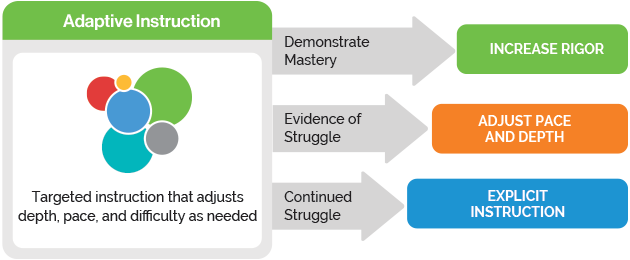
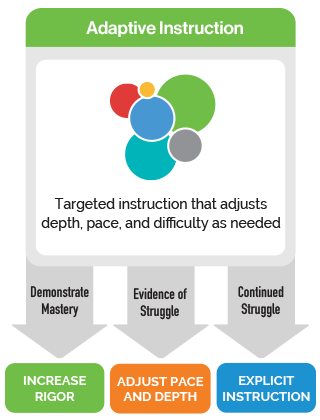
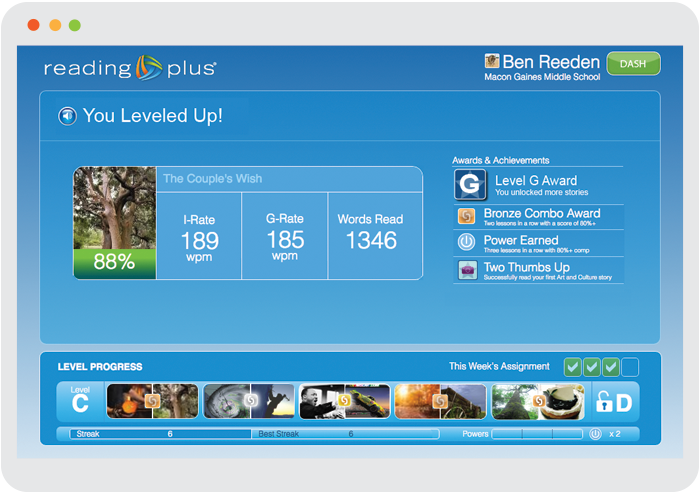
Rigor
Students' goals and milestones are individually created based on their initial assessment and ongoing performance. This personalization helps students take ownership of their own learning and work towards progressive levels of mastery. When students demonstrate mastery by fulfilling the performance-based requirements on a given level, they are progressed to increasingly rigorous levels of instruction and practice.
Adjusting Pace, Depth, and Scaffolds
When students show signs of struggle, the program makes decisions on how to adjust the instruction and practice parameters to best assist them in progressing through the learning objectives.
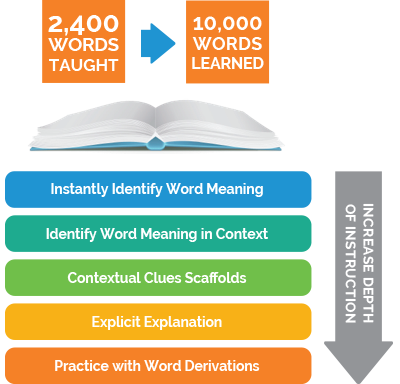
Depth of Vocabulary Instruction
Reading Plus uses a proprietary, research-based list of foundational academic vocabulary. These 2,400 words are members of rich morphological families, so learning them provides students with a basis to recognize and understand 10,000 highly frequent academic words within texts and across curricula.
Students who are not able to instantly identify a given word are provided with contextual clues that help them identify meaning and demonstrate an understanding of the various morphological expressions the word can take.
Pacing and Scaffolds for Independent Reading
To assist students working to develop reading efficiency, the program evaluates reading efficiency and comprehension performance in order to decide how text will be presented. Students who evidence lower levels of reading stamina progress through texts in stages. At each of these segment breaks, the student is asked to reflect on what was read, or are prepared for what will come next within the text.
These scaffolds are progressively removed as students develop the stamina required for extended reading with good comprehension.
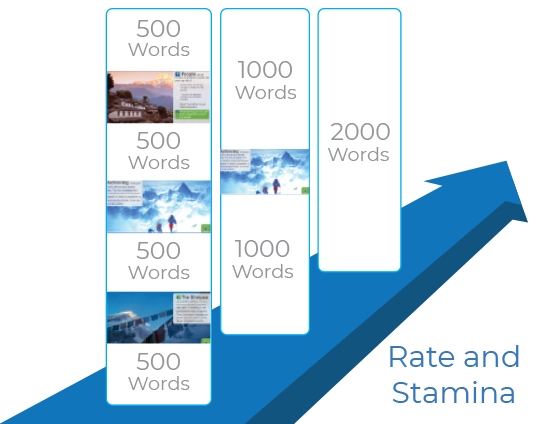
Developing Comprehension
Skill Mastery
Reading Plus provides practice with 20 sub-skills to ensure students develop the ability to understand texts in a deep and meaningful way. Sub-skills are fully aligned with national and state standards for reading informational and literary texts.
Student performance within comprehension activities determines how the program will adjust to assist students to guide them towards mastery. Instructional resources for students and teachers support targeted practice and explicit instruction of skills and sub-skills.
